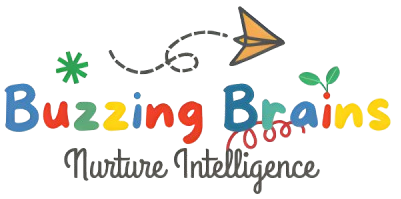As a parent, you want your child to grow into a healthy, confident, and capable individual. One crucial aspect of childhood development is visual discrimination skills, which enable kids to process and understand visual information. In this article, we’ll explore the importance of developing visual discrimination skill in kids, the repercussions of not having developed these skills, and provide tips and strategies for parents to improve visual discrimination skill in their children.
What are Visual Discrimination Skills?
Visual discrimination skill Refer to the ability to process and understand visual information, such as shapes, colors, and patterns. These skills involve the brain’s ability to analyze and interpret visual data, and are essential for learning and development.
Why is it Important to Develop Visual Discrimination Skills?
Developing visual discrimination skills is crucial for kids’ cognitive development and academic success. Here are some reasons why:
Improved Academic Performance: Visual discrimination skills are essential for learning and understanding various subjects, such as math, science, and reading.
Better Problem-Solving Skills: Visual discrimination skills enable kids to analyze and interpret visual information, which is critical for problem-solving and critical thinking.
Increased Confidence: Mastering visual discrimination skills can boost kids’ confidence and self-esteem, enabling them to tackle new challenges with greater ease.
Enhanced Creativity: Visual discrimination skills enable kids to appreciate and create art, design, and other creative expressions.
Repercussions of Not Having Developed Visual Discrimination Skills
If kids don’t develop visual discrimination skills, they may face several challenges, including:
- Difficulty with Learning: Kids who struggle with visual discrimination skills may find it challenging to learn and understand new information.
- Poor Academic Performance: Visual discrimination skills are essential for academic success, and kids who struggle with these skills may perform poorly in school.
- Low Confidence: Poor visual discrimination skills can lead to low confidence and self-esteem, making kids more likely to avoid challenges and new experiences.
Effects of a Lack of Visual Discrimination Skills in Different Age Groups
The effects of a lack of visual discrimination skills can vary depending on the age group:
2-5 years: Kids in this age group may struggle with basic visual discrimination skills, such as recognizing shapes and colors.
5-10 years: Kids in this age group may find it challenging to learn and understand more complex visual information, such as patterns and sequences.
10+ years: Kids in this age group may struggle with more advanced visual discrimination tasks, such as interpreting graphs and charts.
Games, Puzzles, and Activities to Improve Visual Discrimination Skill
Here are some games, puzzles, and activities that can help improve visual discrimination skill in kids:
Shape Sorting: Shape sorting games can help kids develop visual discrimination skills, such as recognizing and categorizing shapes.
Color Matching: Color matching games can help kids develop visual discrimination skills, such as recognizing and matching colors.
Pattern Recognition: Pattern recognition games can help kids develop visual discrimination skills, such as recognizing and completing patterns.
Art Projects: Art projects can help kids develop visual discrimination skills, such as creating and interpreting art.
Strategies to Improve Visual Discrimination Skills in Children
Here are some strategies to improve visual discrimination skills in kids:
Practice Regularly: Encourage kids to practice visual discrimination skill regularly, using games and activities that promote skill-building.
Make it Fun: Make visual discrimination skill development fun and engaging, using games and activities that kids enjoy.
Provide Opportunities for Practice: Provide opportunities for kids to practice visual discrimination skills, such as playing shape sorting games or completing puzzles.
Be a Role Model: Be a role model for visual discrimination skill development, engaging in activities with your kid and promoting a healthy, active lifestyle.
Tips for Parents
Here are some tips for parents to help improve visual discrimination skills in their kids:
Encourage Exploration: Encourage kids to explore and engage with their environment, which can help develop visual discrimination skills.
Provide a Variety of Activities: Provide a variety of activities that promote visual discrimination skill development, such as puzzles, games, and art projects.
Be Patient: Be patient and supportive, recognizing that visual discrimination skill development can take time and practice.
Make it a Family Affair: Make visual discrimination skill development a family affair, engaging in activities with your kid and promoting a healthy, active lifestyle.
Additional Tips for Parents
Here are some additional tips for parents to help improve visual discrimination skills in their kids:
Use Real-Life Examples: Use real-life examples to help kids develop visual discrimination skill, such as pointing out shapes and patterns in nature or architecture.
Encourage Active Learning: Encourage kids to engage in active learning, such as hands-on activities and experiments, to help develop visual discrimination skills.
Provide Feedback: Provide feedback to kids on their performance, helping them to identify areas for improvement and develop strategies for improvement.
Make it Challenging: Make activities challenging for kids, gradually increasing the difficulty level as they develop their visual discrimination skills.
Common Challenges and Solutions
Here are some common challenges that parents may face when trying to improve visual discrimination skill in their kids, along with some potential solutions:
Lack of Motivation: Encourage kids to find activities that they enjoy, and provide positive reinforcement and support.
Limited Access to Resources: Look for free or low-cost resources in your community, such as libraries or online educational resources, that can support visual discrimination skill development.
Learning Disabilities: Consult with a healthcare professional or educational specialist to develop a plan that meets your kid’s needs and abilities.
The Importance of Early Intervention
Early intervention is critical for kids who are struggling with visual discrimination skills. Research shows that kids who receive early intervention and support are more likely to develop the skills they need to succeed in school and beyond.
Conclusion
Visual discrimination skills are essential for kids’ cognitive development and academic success. By providing opportunities for practice, making it fun, and being a positive role model, parents can help their kids develop the visual discrimination skills they need to succeed.

